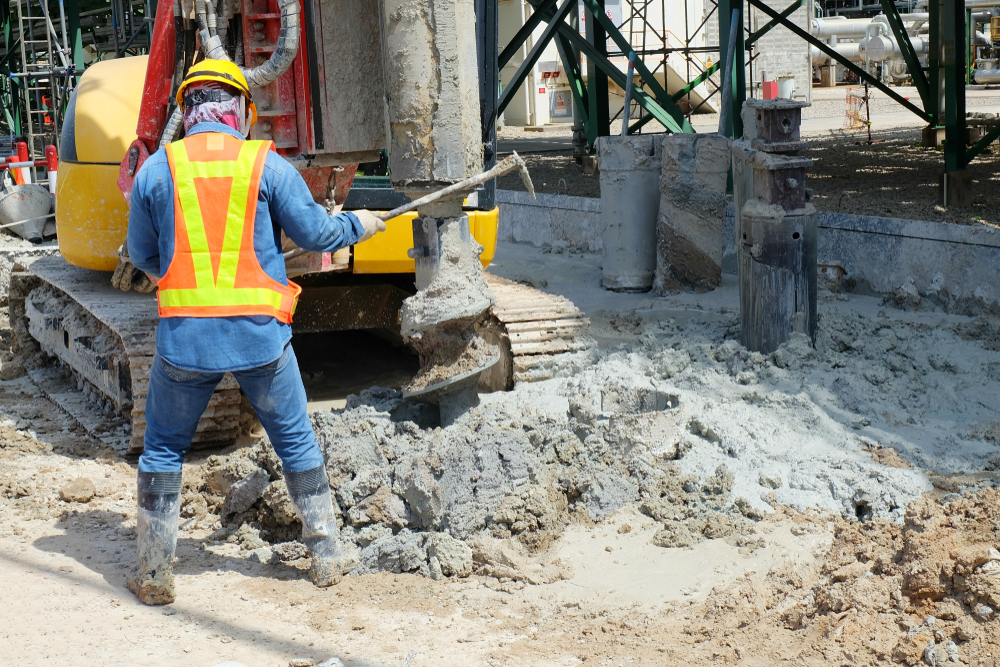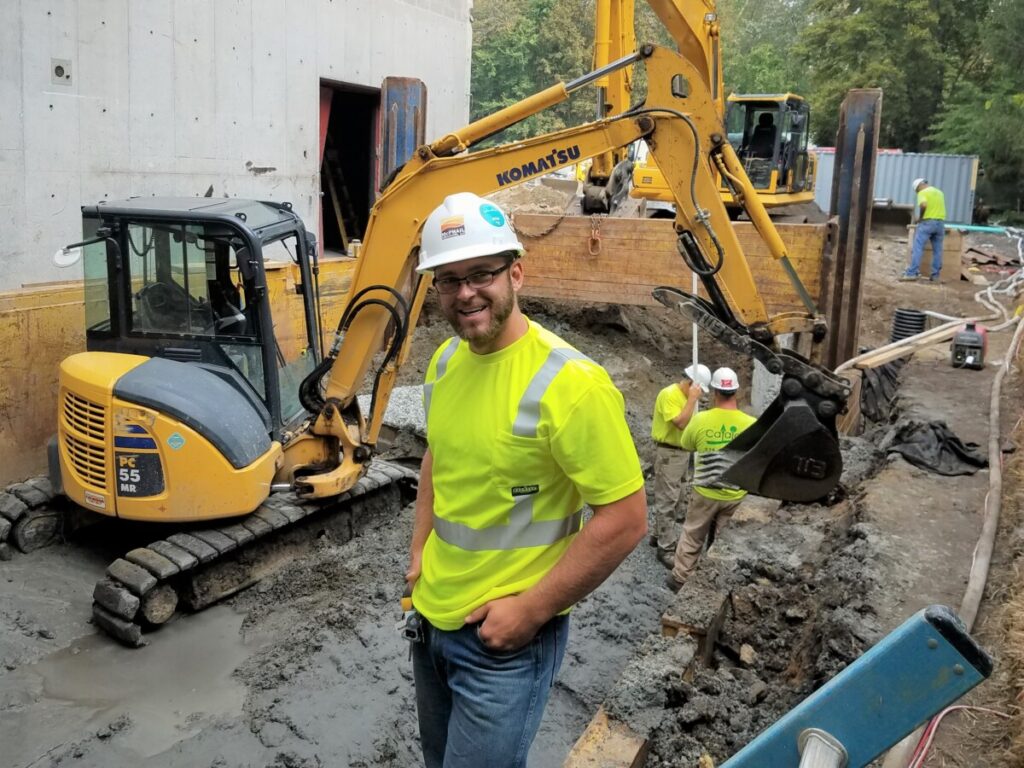Exactly How a Tailings Engineer Can Maximize Waste Management for Mining Workflow
Exactly How a Tailings Engineer Can Maximize Waste Management for Mining Workflow
Blog Article
Exploring the Ingenious Techniques and Technologies Forming the Future of the Geotechnical Market for Lasting Engineering Solutions
The geotechnical industry is undergoing a transformative change, driven by innovative strategies and innovations that stress sustainable design remedies. Advanced soil stablizing methods, making use of smart products, and the application of information analytics are redefining how we come close to infrastructure difficulties. As these advancements advertise ecological stewardship, they also elevate vital inquiries about their functional implementation and long-lasting efficiency. Understanding the interaction between these advancements and their possible to change the area welcomes more expedition into the future of lasting engineering techniques.
Advanced Dirt Stablizing Strategies
Soil stablizing is a crucial process in geotechnical engineering, targeted at improving the physical residential properties of soil to boost its load-bearing capacity and toughness. Advanced dirt stablizing strategies play a pivotal function in resolving obstacles related to weak or unpredictable dirts, consequently making it possible for risk-free and efficient building practices.
Amongst the famous techniques, chemical stabilization involves using ingredients such as lime, cement, or fly ash, which respond with dirt bits to develop a more natural mass. This strategy is especially reliable in improving the strength and wetness resistance of expansive clay soils. Mechanical stabilization, on the various other hand, includes the physical alteration of dirt homes through compaction or the unification of granular products, resulting in boosted thickness and stability.
An additional ingenious technique is the use of geosynthetics, which provide support and decrease dirt erosion while boosting water drainage. Methods like soil mixing and deep dirt stabilization are additionally obtaining grip, enabling in-situ therapy of bothersome soils. Jointly, these sophisticated approaches not only improve the efficiency of soil structures however likewise add to lasting engineering methods by minimizing the need for considerable excavation and material transportation.
Smart Products in Geotechnics
Innovation goes to the forefront of geotechnical engineering, specifically with the incorporation of wise products that boost the performance and performance of dirt frameworks. Smart materials, such as shape memory alloys, piezoelectric materials, and self-healing polymers, are revolutionizing the means designers approach soil stabilization and facilities long life (consulting engineer). These materials can adapt to altering ecological problems, react to stress, and also fix themselves, significantly enhancing the durability of geotechnical systems
For circumstances, piezoelectric products can produce electric fees in action to mechanical anxiety, supplying possible for real-time surveillance of soil conditions and structural stability. Likewise, self-healing materials can autonomously repair problems and splits, lowering upkeep prices and expanding the life expectancy of geotechnical assets. The integration of these clever products not just boosts the mechanical homes of soil but additionally adds to sustainable engineering methods by decreasing source consumption and environmental influence.
As the geotechnical market proceeds to advance, the fostering of clever materials will play an essential function in developing innovative remedies, making sure that facilities are not just durable but also versatile to future difficulties. This transformative method is poised to redefine the standards of security and performance in geotechnical design.
Information Analytics for Facilities
The assimilation of clever products in geotechnical design has led the way for innovative approaches, especially in the world of data analytics for framework. This ingenious method leverages comprehensive information collection and logical methods to improve decision-making procedures throughout the framework lifecycle. By using sensing units installed in wise materials, designers can continually keep track of critical parameters such as dirt security, dampness degrees, and architectural honesty.
Data analytics makes it possible for the makeover of raw information into workable insights, enabling predictive maintenance and boosted danger management. Advanced formulas and artificial intelligence techniques assist in the recognition of anomalies and patterns, which can optimize and educate timely treatments source appropriation. Additionally, incorporating geographic information systems (GIS) boosts spatial evaluation, further enriching the decision-making framework.
By utilizing the power of information analytics, the geotechnical market is positioned to not just enhance existing methods but additionally pioneer innovative options for future infrastructure obstacles. This harmony of technology and design principles will certainly define the future of lasting framework advancement.

Sustainable Ground Improvement Approaches
Different lasting ground enhancement approaches are becoming essential services to address the obstacles of geotechnical engineering while lessening ecological effect. These approaches not only enhance dirt performance but additionally advertise environmental stewardship by lowering reliance on standard, more invasive methods.

Another ingenious method is the application of geosynthetics, that includes naturally degradable products that enhance dirt while promoting water drainage and disintegration control - geotechnical engineers. This lowers the demand for heavy equipment and decreases website disturbance, therefore protecting regional ecological communities
Additionally, strategies such as dynamic compaction and vibro-replacement have actually evolved to consist of lasting techniques, integrating recycled materials and lowering carbon impacts. These techniques exemplify the industry's change in the direction of even more environmentally liable remedies, making sure that ground enhancement not only meets design needs yet likewise contributes positively to the surrounding setting.
Technologies in Ecological Monitoring
In the last few years, improvements in environmental surveillance have actually substantially enhanced the capacity to examine and manage geotechnical projects with very little eco-friendly interruption. Ingenious modern technologies, such as remote noticing, Net of Points (IoT) devices, and real-time information analytics, are transforming exactly how ecological effects are gauged and alleviated.
Remote sensing modern technologies, including satellite images and airborne LiDAR, assist in the quick evaluation of land usage modifications and ecological conditions - geo tech engineer. These tools enable for continual monitoring of websites, making it possible for engineers to recognize potential problems prior to they rise. Furthermore, IoT tools, geared up with sensing units for criteria like soil temperature level, gas, and moisture discharges, give live data streams that improve the understanding of site-specific ecological variables
Real-time information analytics better refine decision-making processes by integrating data from different sources, enabling for aggressive monitoring strategies. This all natural technique not just ensures compliance with environmental policies but also promotes sustainable engineer of record practices within the geotechnical industry.
As these developments remain to develop, they hold the prospective to bridge the void between design purposes and ecological stewardship, cultivating a much more sustainable future for geotechnical jobs worldwide.
Conclusion
Advanced soil stablizing methods, the assimilation of clever materials, and the application of information analytics jointly improve the strength and effectiveness of framework. These innovations not only address modern engineering difficulties but additionally pave the way for a more sustainable future in geotechnical techniques.
Strategies like dirt mixing and deep soil stabilization are likewise gaining traction, allowing for in-situ therapy of bothersome dirts. Jointly, these innovative approaches not just enhance the efficiency of soil frameworks yet additionally add to lasting engineering practices by minimizing the need for comprehensive excavation and material transportation.

Report this page